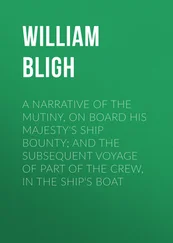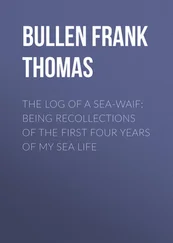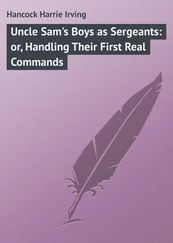But if the hood tears or doesn’t work then the sailor is back to the Rush Escape technique. To stop the lungs from bursting when shooting up from the pressurised depths, sailors are taught to shout as hard as they can all the way to the surface in a bellowing exhale that can last a minute or longer as the air expands as fast as it can be expelled.
It was all too obvious at the time that the warm, clear water of the 30-metre-deep training tank was only faint preparation for what it would be like escaping from a submarine flooding with freezing, oil stained seawater that was probably far deeper.
Thinking about the trapped men while sitting in that empty office, the silence became a roaring in Riches’ ears. It reminded him of being in his escape hood, and of the brutal noise of his own everlasting scream.
Friday, 5 August
SS + 28 h 28 mins
08.58 UK – 11.58 Moscow – 20.58 Kamchatka
Ministry of Defence Abbey Wood, Bristol
Finally, shortly before nine in the morning, a message appeared on the ISMERLO site. It was posted by Commander Trond Juvik, using Zulu time – the international standard, the equivalent of Greenwich Mean Time.
07:58:45: Russians are asking for international assistance ref phonecall from [Command Task Force] CTF 74. Vehicle has to be rescued / salvaged from the seabed and ROV / ADS resources are required to do the disentanglement from the net / cables. Eventually cable for lifting arrangements if she cannot come to the surface by her own power.
This was new. The fact that the vehicle – whatever it was – had got into trouble was one thing. But the fact that the Russians had called CTF 74 – the US submarine force based in Japan – and asked for help was another. Somehow the Russians were unable to solve this on their own and seemed willing to bring in outside help.
More messages added other clues. The Russians had despatched the specialised rescue ship Savany from Primorye, but it wouldn’t reach the area until 9 August, at least three days away. Riches didn’t know how much air the men on the submersible had, but three days was a long time – probably too long.
Twenty minutes later another message came up, this time from the US Navy’s Admiral Michael Martin of CTF 74. He posted a rough translation of a fax sent to Admiral Wachendorf at the US embassy in Moscow by Admiral Vladimir Masorin, the Head of the Main Staff in the Russian Federation Navy.
Russian Federation Navy
To: Admiral Wachendorf
On 4 August in Berezovya Bay near the coast of the Kamchatka Peninsula while conducting underwater operations a bathysphere AS-28 encountered an emergency situation. At the depth of around 230 metres the bathysphere lost the ability to rise to the surface with an 18mm steel cable wound around its propeller and its hull.
There are seven people on board. There is reserve high pressure air for breathing and food and water on board.
Our specialists have determined that we do not have the means in this region to effect a rescue.
Therefore, the Commander in Chief of the Russian Navy urgently requests that the US Navy examines US capabilities to provide assistance by flying in deep submergence rescue vehicles capable of carrying out a rescue operation to free AS-28 from its cable and to raise it to the surface.
Please respond to me as soon as possible.
With respect, V. Masorin
Riches picked up the phone to Sam Sampson at James Fisher Rumic to discuss what the UK’s response should be. If they were going to respond to this situation, what would they do? The incident might be on the other side of the world, but all nations with Submarine Rescue assets that were involved in ISMERLO would be pondering the same problem, as they did in every exercise. Riches and Sampson agreed that LR5, the UK’s Rescue Submersible, was probably not the tool for the job. No one knew much about the Russian Deep Submergence Rescue Vehicles (DSRVs), but they did know that the AS-28 was a Priz-class rescue vehicle, otherwise known as Project 1855. Because she was designed to mate with stricken submarines herself, she didn’t have the now-standard hatches to enable another rescue submersible to mate with her.
She was too deep for the men to try to free themselves without escape suits; even if they had the very latest versions with all the extra floatation and oxygen they provided, 200 metres was at the very outer limit of what was survivable.
‘The only solution is to cut the cables and free the submersible,’ said Sampson. ‘Scorpio’s cutter should do it. And if it’s too thick for that, we’ll bring along LR5’s. The guys can adapt it to fit the ROV.’
‘Okay. How about timescales? How long to get to Prestwick airport?’ Riches replied. Although Glasgow’s international airport was the closest to the UKSRS base, Prestwick was better for military heavy lift access. Together with the RAF transport division’s estimate of how long it would take from there, this would largely determine their projected ‘Time To First Rescue’, leading to a list of options from which the host nation could choose the best. That was the most crucial factor in determining which rescue team would be asked to help. In the case of submarine rescue, the best almost always meant the fastest.
Making the offer also made the diplomats happy. Riches had phoned the MOD’s Crisis Management Cell and they were keen to make the most of the situation, so gears began to turn at a high level.
Once Sampson had told him the good news about Scorpio’s state of readiness, Riches made another couple of calls, including to the Duty Submarine Controller. Riches spoke to Captain Holloway to let him know what he was proposing. He didn’t want to risk the offer getting delayed by a bureaucratic snag. Finally he posted a message on ISMERLO.
08.24.51 – Scorpio currently sat on lorry awaiting transportation for Exercise Northern Sun. Available at Immediate Notice for assistance subject to UK MoD approval. Estimated time to Intervention approximately 36 hours.
This was all looking good for his report. The theoretical response time of 36 more hours would get them there around 64 hours after they estimated that the submersible had become trapped; the Submarine Rescue Service aimed to reach a stricken submarine within 72 hours. He might not be allowed to command his own submarine, but at least his superiors would see that he could still run a tight team and that their reaction times were good. If this kind of thing ever happened closer to home, they’d be ready. He could see the day developing with a few more phone calls followed by the inevitable order to stand down. They’d been through this too many times for him to get excited about an actual deployment. They were too far away to be considered a good option. But looking on the bright side, he might even make the evening flight back home for the weekend.
The ISMERLO Command site was filling with chatter. The Japanese had responded immediately to the news; three ships were already underway. Riches smiled. The news signalled a diplomatic triumph for the concept of international submarine rescue, for Russia and Japan were locked in a territorial dispute. At the end of the Second World War, both nations had claimed the Kuril islands, strung between the Kamchatka Peninsula and Japan, for themselves. Neither had yet won the argument, and both still refused to sign agreements.
Japan’s deep-ocean capabilities were arguably the best in the world. As an island nation, Japan takes the sea very seriously. Its best Remotely Operated Vehicle could reach the very bottom of the deepest part of the ocean, the Mariana Trench, far beyond what any other nations could achieve at the time (Japan’s ROV has since been lost, and a US vehicle is now the only one able to reach the Challenger Deep). Its Navy boasted two impressive Deep Submergence Rescue Vehicles. Each of the submersibles had its own dedicated mothership that was fully outfitted with decompression facilities, diving bells and ROVs, and both of these vessels, the Chiyoda and Chihaya , had been despatched to Kamchatka.
Читать дальше












